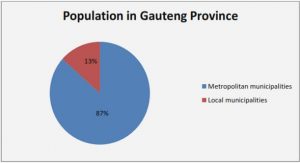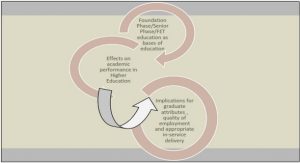Get Complete Project Material File(s) Now!
Baron et al ( see Article 1 section A paragraph 2 of the Convention relating to the Status of Refugees Adopted on 28 July 1951 by the United Nations Conference of Plenipotentiaries on the Status of Refugees and Stateless Persons convened under General Assembly resolution 429 (V) of 14 December 1950), defines a refugee as, a person who, owing to well‐founded fear of being persecuted for reasons of race, religion, nationality, membership of a particular social group or political opinion, is outside the country of his[sic] nationality and is unable, or owing to such fear, is unwilling to avail himself[sic] of the protection of that country; or who, not having a nationality and being outside the country of his[sic] former habitual residence as a result of such events, is unable or, owing to such fear, is unwilling to return to it.
In recent studies of refugees, disaster victims, prisoners of war, and other traumatised populations suggest that victims are at excess risk of displaying suicidal behaviour for several years after the traumatic event (Ferrada‐Noli et all cited in Solomon 2003: 7). Because of the sheer magnitude of global conflict, the number of refugees and displaced persons throughout the world has risen exponentially (Robertson 2006). “Research has established that refugees are more prone to psychiatric illnesses than the general population.” (Tang et al 2001:507‐512). Staff of Harvard Program in Refugee Trauma has listened to more than eight hundred trauma stories of mass violence, torture and earthquake over the past twenty years. And yet “In spite of the repetitive patterns of human cruelty, every story remains unique and fascinating (Mollica 2007).”
Postfoundationalist Practical Theology
Using Postfoundationalist approach of doing practical theological research, Huyssteen advocates for a « Postfoundationalist theology » as a viable third option beyond the extremes of foundationalism and nonfoundationalism. He says that Postfoundationalist theology, like science, relies on a community, a community that converses with itself but also seeks to engage in dialogue across the disciplines because of the rational resources we share (2006:14). In developing his notion of Postfoundationalist rationality, Huyssteen (2006:10) argues for the abandonment of modernist notions of rationality, typically rooted in foundationalism and in the quest for secure foundations for our various domains of knowledge. » Instead he opts for a Postfoundationalist rationality which « helps us to acknowledge contextuality, the shaping role of tradition and of interpreted experience, while at the same time enabling us to reach out beyond our own groups, communities, and cultures, in plausible forms of inter‐subjective, cross‐contextual, and cross‐disciplinary conversations. » He adds that on this Postfoundationalist view embodied persons, and not abstract beliefs, should be seen as the locus of rationality.
He believes that as human beings we are always socially and contextually embedded and as such we perform rationally by making informed and responsible judgments in very specific personal, communal, but also disciplinary and interdisciplinary contexts (2006:10). As human beings we always interpret our experiences, our observations and perceptions are always theory‐laden, and they interact with our world(s) in terms of life views to which we are already committed (2006:13). Therefore we cannot but yield a form of compelling knowledge that must seek to strike a balance between the way our beliefs are anchored in interpreted experience and the broader networks of beliefs in which our rationality compelling experiences are already embedded. As such Huyssteen presses for a public voice of theology in our complex, contemporary culture where theologians and scientists of various stripes, as he calls them, should be empowered to protect their rational integrity of their own disciplines, but also at the same time identifying overlapping issues, shared problems, and even parallel research trajectories as we cross disciplinary lines in multidisciplinary research (2006:13). Although he advocates that a theologian may join forces with the critical scientist in drawing the boundaries vis‐a‐vis all forms of scientism, Huyssteen says that a theologian has a moral obligation to resist all forms of theological imperialism and scientism which have the potential to destroy interdisciplinary dialogue (2006:14). The result is a convincing argument that only a truly accessible and philosophically credible notion of inter‐disciplinarity will be able to pave the way for a plausible public theology that can play an important intellectual role in our fragmented culture today.
CHAPTER 1: RESEARCH ROAD MAP
1. INTRODUCTION
1.2. RESEARCH AIM
1.3. THE INSPIRATION FOR THE STUDY
1.4. EPISTEMOLOGICAL POSITIONING OF THE RESEARCH
1.5 SEVEN MOVEMENTS DESCRIBED
1.6. SUMMARY OF THE CHAPTER
2.1. INTRODUCTION
2.2. RESEARCH METHODOLOGY
CHAPTER 3: UNDERSTANDING TRAUMA
3.1. INTRODUCTION
3.2. UNDERSTANDING TRAUMA
3.3. PSYCHOLOGICAL RESPONSES TO TRAUMA
3.4. TRAUMA AND RECOVERY
3.5. SUMMARY OF THE CHAPTER
CHAPTER 4: THE LIFE NARRATIVE OF CHARLES
CHAPTER 5: LIFE NARRATIVES OF RESEARCH PARTICIPANTS
5.1. The Life Narrative Of Noma
5.2. Escape From Civil War: The Life Narrative Of John
5.5 The Life Narrative Of Bonie Madondo
6.1. Trauma and Spirituality
6.2. Spiritual Injury
6.3. Theodicy Issues
6.4. Moral Injury
6.5. Death And Grief
CHAPTER 7: INTERDISCIPLINARY INVESTIGATION
7.2. POSTFOUNDATIONALIST PRACTICAL THEOLOGY
8.2. POST‐TRAUMATIC SPIRITUALITY






